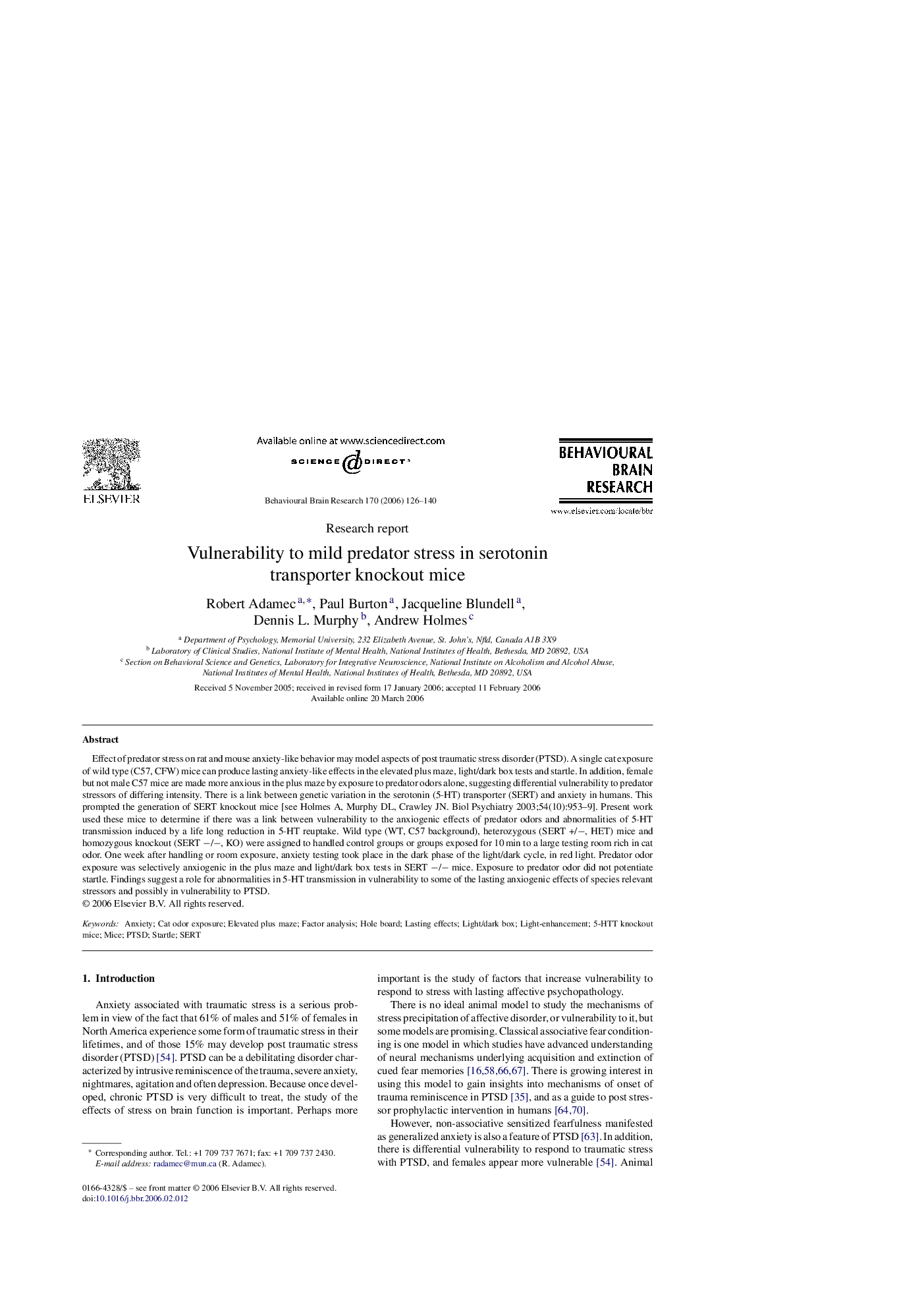| کد مقاله | کد نشریه | سال انتشار | مقاله انگلیسی | نسخه تمام متن |
|---|---|---|---|---|
| 4316101 | 1290107 | 2006 | 15 صفحه PDF | دانلود رایگان |

Effect of predator stress on rat and mouse anxiety-like behavior may model aspects of post traumatic stress disorder (PTSD). A single cat exposure of wild type (C57, CFW) mice can produce lasting anxiety-like effects in the elevated plus maze, light/dark box tests and startle. In addition, female but not male C57 mice are made more anxious in the plus maze by exposure to predator odors alone, suggesting differential vulnerability to predator stressors of differing intensity. There is a link between genetic variation in the serotonin (5-HT) transporter (SERT) and anxiety in humans. This prompted the generation of SERT knockout mice [see Holmes A, Murphy DL, Crawley JN. Biol Psychiatry 2003;54(10):953–9]. Present work used these mice to determine if there was a link between vulnerability to the anxiogenic effects of predator odors and abnormalities of 5-HT transmission induced by a life long reduction in 5-HT reuptake. Wild type (WT, C57 background), heterozygous (SERT +/−, HET) mice and homozygous knockout (SERT −/−, KO) were assigned to handled control groups or groups exposed for 10 min to a large testing room rich in cat odor. One week after handling or room exposure, anxiety testing took place in the dark phase of the light/dark cycle, in red light. Predator odor exposure was selectively anxiogenic in the plus maze and light/dark box tests in SERT −/− mice. Exposure to predator odor did not potentiate startle. Findings suggest a role for abnormalities in 5-HT transmission in vulnerability to some of the lasting anxiogenic effects of species relevant stressors and possibly in vulnerability to PTSD.
Journal: Behavioural Brain Research - Volume 170, Issue 1, 3 June 2006, Pages 126–140